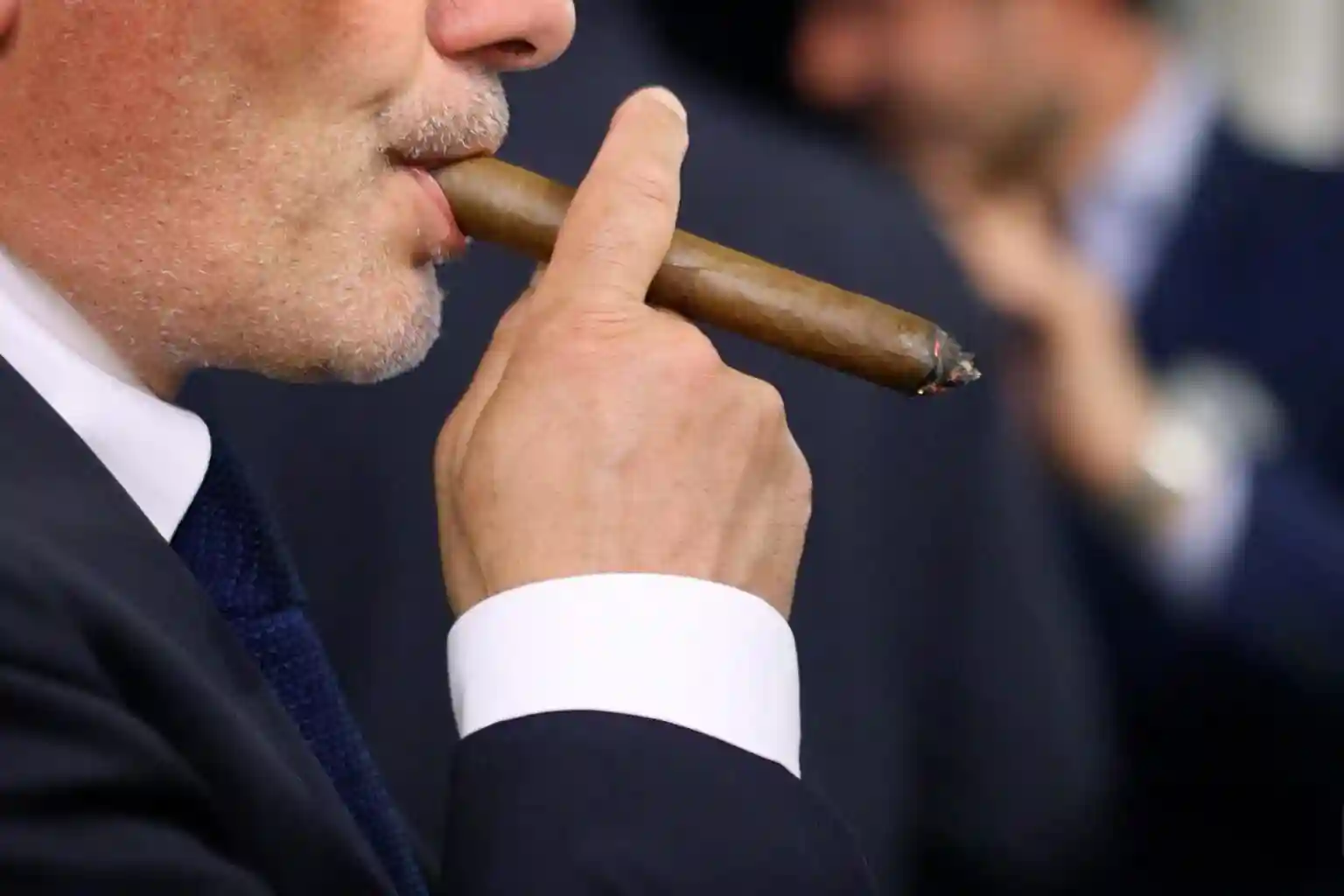
探索古巴雪茄如何将传统、创新和工艺独特地结合在一起,成为世界奢华和尊贵的象征... 古巴雪茄(或称 "哈瓦那")如今已成为尊贵和精致的代名词,在全球最令人垂涎的奢侈品中占据着重要地位。它的声誉可与百达翡丽手表、爱马仕手袋或波尔多特级酒庄媲美。这种声望绝非偶然,而是融合了数百年传统、大胆创新和精湛工艺的复杂炼金术的结果。本文将探讨一种简单的农产品是如何逐渐登上奢侈品市场的顶峰的。
历史根源:从传统到优秀
古巴雪茄的历史与古巴的历史密不可分。早在前哥伦布时代,西印度群岛的土著人就抽 "西卡",一种用棕榈叶、玉米叶或车前草叶包裹生烟叶或切碎烟叶制成的原始雪茄。1492 年,当克里斯托弗-哥伦布的同伴们在今古巴的吉巴拉湾登陆时,他们很快就尝到了烟草的乐趣,后来他们把烟草带到了欧洲土地上。 烟草最初被用作药材,很快受到欧洲上流社会的欢迎。从 19 世纪起,古巴的雪茄业开始发展,为后来成为世界顶级雪茄生产中心奠定了基础。 在此期间,哈瓦那烟草业以严格的手工操作为基础,旨在保证产品的卓越品质。烟叶由手工采摘、烘干,然后经过精心发酵,形成哈瓦那烟特有的复杂香气。某些地区独特的气候,如 下坡之旅加上肥沃的土壤,这里出产的烟草品质无与伦比。更重要的是 驾驶技巧 在这一时期,"梵高 "的工艺不断发展和完善,形成了独特的工艺。也正是在这一时期,戒指、雪松木盒和盒盖上的装饰石版画(远景)等标志性元素应运而生。
卓越的 古巴雪茄 因此,哈瓦那烟是建立在几个世纪以来不断完善的专有技术和精湛工艺基础之上的。这一传统牢牢扎根于古巴文化,使哈瓦诺斯从一开始就脱颖而出,成为深受高雅客户追捧的卓越产品。
古巴革命:断裂与延续之间
1959 年的古巴革命可能标志着我们所熟知的古巴雪茄业的终结。农田和工厂的国有化对该行业产生了深远影响。然而,与古巴其他行业不同的是,雪茄业在适应新的经济和政治环境的同时,还保留了自己的精髓。 古巴政府意识到这一产业对国民经济的战略重要性,因此建立了一个将国家控制、传统方法保护和开放创新相结合的混合体系。国家在保持高质量标准的同时,逐步整合科技进步成果,以提高生产水平。 例如,成立于 1985 年的公共机构烟草研究所在开发新烟草品种和设计某些烟草疾病的防御系统方面发挥了关键作用。此外,烟草研究所还投入巨资,对关键的烟叶烘烤和发酵阶段的温度和湿度监测设备进行现代化改造。这种传统与创新相结合的混合模式使哈瓦诺斯得以保持其卓越的品质,并巩固了其在奢侈品市场的地位。通过保留传统制造方法并将其与技术创新相结合,古巴成功地保留了这些雪茄的独特性,同时满足了全球市场的需求。
向奢侈品的战略转变
从 20 世纪 90 年代起,古巴雪茄业开始向高端市场发展,明确将自己定位于奢侈品市场。限量版和收藏级雪茄的推出,以及最近某些旗舰品牌与香港价格的接轨,都有助于巩固哈瓦那雪茄的尊贵形象。这些品牌包括 高希霸, 蒙特克里斯托 或 特立尼达 已成为奢华的代名词,其标志性模块如 Cohiba Behike 52的 Cohiba Esplendidos 和 特立尼达基金会价格飙升,而诸如 蒙特克里斯托, 帕塔加斯 和 罗密欧与朱丽叶 上升了 5 % 到 25 % 之间。
这种提价策略,加上有针对性的市场营销,旨在通过著名活动、专门的贸易展销会和与其他奢侈品牌的合作,为雪茄爱好者提供独特的体验,有助于加强古巴雪茄的高端形象,巩固其在世界市场上的独特地位。随着雪茄价格的上涨,古巴雪茄现在已经完全符合奢侈品的定义,充分体现了其 "昂贵、精致和奢华 "*的特点。它不再仅仅是一种消费品,而是一种欲望的对象,一种名副其实的收藏品。 然而,古巴雪茄并不仅仅是上流社会的尊贵产品,它还体现了一种生活艺术,一种对美好事物品味的肯定。抽一支哈瓦那雪茄,就等于参与了一个古老的传统,同时也拥抱了一种重视真实性和卓越性的现代生活。
结论
古巴雪茄之所以能成为奢侈品,是因为它将传统、创新和面对经济和政治挑战的韧性独特地结合在一起。在国家发挥核心作用的社会主义经济背景下,哈瓦那雪茄成功地保持了其原汁原味,同时不断发展以满足全球市场的需求。 今天,古巴雪茄仍然是尊贵的象征,是全球精英追捧的产品,他们欣赏每支哈瓦那雪茄的非凡工艺和丰富历史。这种成功证明了古巴雪茄能够体现奢侈品的精髓:一种深深植根于原产国文化和历史的稀有、精致的产品。

探索古巴雪茄如何將傳統、創新和工藝獨特地結合在一起,成為世界奢華和尊貴的象徵. ..古巴雪茄(或稱“哈瓦那”)如今已成為尊貴和精緻的代名詞,在全球最令人垂涎的奢侈品中佔據著重要地位。 它的聲譽可與百達翡麗手錶、愛馬仕手袋或波爾多特級酒莊媲美。 這種聲望絕非偶然,而是融合了數百年傳統、大膽創新和精湛工藝的複雜煉金術的結果。 本文將探討一種簡單的農產品是如何逐漸登上奢侈品市場的頂峰的。
歷史根源:從傳統到優秀
古巴雪茄的歷史與古巴的歷史密不可分。 早在前哥倫布時代,西印度群島的土著人就抽“西卡”,一種用棕櫚葉、玉米葉或車前草葉包裹生煙葉或切碎煙葉製成的原始雪茄。 1492年,當克里斯多夫-哥倫布的同伴們在今古巴的吉巴拉灣登入時,他們很快就嘗到了烟草的樂趣,後來他們把烟草帶到了歐洲土地上。 烟草最初被用作藥材,很快受到歐洲上流社會的歡迎。 從19世紀起,古巴的雪茄業開始發展,為後來成為世界頂級雪茄生產中心奠定了基礎。 在此期間,哈瓦那煙草業以嚴格的手工操作為基礎,旨在保證產品的卓越品質。 煙葉由手工採摘、烘乾,然後經過精心發酵,形成哈瓦那烟特有的複雜香氣。 某些地區獨特的氣候,如下坡之旅加上肥沃的土壤,這裡出產的烟草品質無與倫比。 更重要的是駕駛技巧在這一時期,“梵古”的工藝不斷發展和完善,形成了獨特的工藝。 也正是在這一時期,戒指、雪松木盒和盒蓋上的裝潢石版畫(遠景)等標誌性元素應運而生。
卓越的古巴雪茄囙此,哈瓦那烟是建立在幾個世紀以來不斷完善的專有技術和精湛工藝基礎之上的。 這一傳統牢牢紮根於古巴文化,使哈瓦諾斯從一開始就脫穎而出,成為深受高雅客戶追捧的卓越產品。
古巴革命:斷裂與延續之間
1959年的古巴革命可能標誌著我們所熟知的古巴雪茄業的終結。 農田和工廠的國有化對該行業產生了深遠影響。 然而,與古巴其他行業不同的是,雪茄業在適應新的經濟和政治環境的同時,還保留了自己的精髓。 古巴政府意識到這一產業對國民經濟的戰畧重要性,囙此建立了一個將國家控制、傳統方法保護和開放創新相結合的混合體系。 國家在保持高品質標準的同時,逐步綜合科技進步成果,以提高生產水准。 例如,成立於1985年的公共機构烟草研究所在開發新烟草品種和設計某些烟草疾病的防禦系統方面發揮了關鍵作用。 此外,烟草研究所還投入鉅資,對關鍵的煙葉烘烤和發酵階段的溫度和濕度監測設備進行現代化改造。 這種傳統與創新相結合的混合模式使哈瓦諾斯得以保持其卓越的品質,並鞏固了其在奢侈品市場的地位。 通過保留傳統製造方法並將其與技術創新相結合,古巴成功地保留了這些雪茄的獨特性,同時滿足了全球市場的需求。
向奢侈品的戰畧轉變
從20世紀90年代起,古巴雪茄業開始向高端市場發展,明確將自己定位於奢侈品市場。 限量版和收藏級雪茄的推出,以及最近某些旗艦品牌與香港價格的接軌,都有助於鞏固哈瓦那雪茄的尊貴形象。 這些品牌包括高希霸,蒙特克裡斯托或特立尼達已成為奢華的代名詞,其標誌性模塊如Cohiba Behike 52的Cohiba Esplendidos和特立尼達基金會價格飆升,而諸如蒙特克裡斯托,帕塔加斯和羅密歐與朱麗葉上升了5 %到25 %之間。
這種提價策略,加上有針對性的市場行銷,旨在通過著名活動、專門的貿易展銷會和與其他奢侈品牌的合作,為雪茄愛好者提供獨特的體驗,有助於加强古巴雪茄的高端形象,鞏固其在世界市場上的獨特地位。 隨著雪茄價格的上漲,古巴雪茄現在已經完全符合奢侈品的定義,充分體現了其“昂貴、精緻和奢華”*的特點。 它不再僅僅是一種消費品,而是一種欲望的對象,一種名副其實的收藏品。 然而,古巴雪茄並不僅僅是上流社會的尊貴產品,它還體現了一種生活藝術,一種對美好事物品味的肯定。 抽一支哈瓦那雪茄,就等於參與了一個古老的傳統,同時也擁抱了一種重視真實性和卓越性的現代生活。
結論
古巴雪茄之所以能成為奢侈品,是因為它將傳統、創新和面對經濟和政治挑戰的韌性獨特地結合在一起。 在國家發揮核心作用的社會主義經濟背景下,哈瓦那雪茄成功地保持了其原汁原味,同時不斷發展以滿足全球市場的需求。 今天,古巴雪茄仍然是尊貴的象徵,是全球精英追捧的產品,他們欣賞每支哈瓦那雪茄的非凡工藝和豐富歷史。 這種成功證明了古巴雪茄能够體現奢侈品的精髓:一種深深植根於原產國文化和歷史的稀有、精緻的產品。

Discover how Cuban cigars uniquely combine tradition, innovation and craftsmanship to become a symbol of luxury and prestige in the world... Cuban cigars (or "Havana") have now become synonymous with nobility and exquisiteness, occupying an important position among the most coveted luxury goods in the world. Their reputation is comparable to Patek Philippe watches, Hermes handbags or Bordeaux Grand Chateau. This prestige is no accident, but the result of complex alchemy that combines hundreds of years of tradition, bold innovation and exquisite craftsmanship. This paper will explore how a simple agricultural product gradually rose to the top of the luxury market.
Historical roots: from tradition to excellence
The history of Cuban cigars is inseparable from the history of Cuba. As early as pre-Columbian times, the natives of the West Indies smoked "sika", a primitive cigar made of raw or chopped tobacco leaves wrapped in palm leaves, corn leaves or psyllium leaves. In 1492, when Christopher Columbus's companions landed in Gibala Bay in present-day Cuba, they quickly tasted the pleasure of tobacco, and later they brought it to European soil. Tobacco was first used as a medicinal material and soon became popular with the European upper class. Since the 19th century, Cuba's cigar industry began to develop, laying the foundation for becoming the world's top cigar production center. During this period, Havana tobacco industry was based on strict manual operation, aiming to ensure the excellent quality of products. Tobacco leaves are picked by hand, dried, and then carefully fermented to form the unique complex aroma of Havana tobacco. The unique climate in some areas, such as downhill trips and fertile soil, makes the quality of tobacco produced here unparalleled. More importantly, driving skills. During this period, Van Gogh's craftsmanship continued to develop and improve, forming a unique craftsmanship. It was also during this period that iconic elements such as rings, cedar boxes and decorative stone prints (vistas) on box lids came into being.
Excellent Cuban cigars Therefore, Havana cigarettes are based on proprietary technology and exquisite craftsmanship that have been continuously improved over centuries. This tradition is firmly rooted in Cuban culture, which makes Havanos stand out from the beginning and become an excellent product sought after by elegant customers.
Cuban Revolution: Between Fracture and Continuation
The Cuban Revolution of 1959 may have marked the end of the Cuban cigar industry as we know it. The nationalization of farmland and factories had a profound impact on the industry. However, unlike other Cuban industries, the cigar industry has retained its own essence while adapting to the new economic and political environment. The Cuban government is aware of the strategic importance of this industry to the national economy, so it has established a mixed system that combines state control, traditional method protection and open innovation. While maintaining high quality standards, the state gradually integrates the achievements of scientific and technological progress to improve the production level. For example, the Tobacco Research Institute, a public institution founded in 1985, has played a key role in developing new tobacco varieties and designing defense systems for certain tobacco diseases. In addition, the Tobacco Research Institute has invested heavily in modernizing the temperature and humidity monitoring equipment in the key tobacco baking and fermentation stages. This hybrid model combining tradition with innovation enables Havanos to maintain its excellent quality and consolidate its position in the luxury market. By preserving traditional manufacturing methods and combining them with technological innovation, Cuba has successfully retained the uniqueness of these cigars while meeting the needs of the global market.
Strategic Shift to Luxury
Since 1990s, Cuban cigar industry has begun to develop towards the high-end market, clearly positioning itself in the luxury market. The introduction of limited edition and collectible cigars, as well as the recent alignment of certain flagship brands with Hong Kong prices, have all helped solidify the distinguished image of Habanero. These brands include Cohiba, Monte Cristo or Trinidad, which have become synonymous with luxury, with iconic modules such as Cohiba Behike 52's Cohiba Esplendidos and Trinidad Foundation soaring in price, while those such as Monte Cristo, Patagas and Romeo and Juliet rose between 5% and 25%.
This price increase strategy, coupled with targeted marketing, aims to provide cigar lovers with a unique experience through prestigious events, specialized trade fairs and partnerships with other luxury brands that helps strengthen the high-end image of Cuban cigars and solidify its unique position in the world market. With the rising price of cigars, Cuban cigars now fully meet the definition of luxury goods, fully reflecting their characteristics of "expensive, exquisite and luxurious" *. It is no longer just a consumer product, but an object of desire, a veritable collectible. However, Cuban cigars are not only noble products of the upper class, but also reflect an art of life and an affirmation of the taste of beautiful things. Smoking a Havana cigar is tantamount to participating in an ancient tradition, and at the same time embracing a modern life that values authenticity and excellence.
Conclusion
Cuban cigars can become luxury goods because they uniquely combine tradition, innovation and resilience in the face of economic and political challenges. In the context of a socialist economy in which the state plays a central role, Habanero has successfully maintained its original flavor while continuously evolving to meet the needs of the global market. Today, Cuban cigars remain a symbol of dignity, a product sought after by the global elite who appreciate the extraordinary craftsmanship and rich history of each Habanero. This success proves that Cuban cigars can embody the essence of luxury: a rare, exquisite product deeply rooted in the culture and history of the country of origin.




